| |
|
|
11.
| The island of the roots |
| |

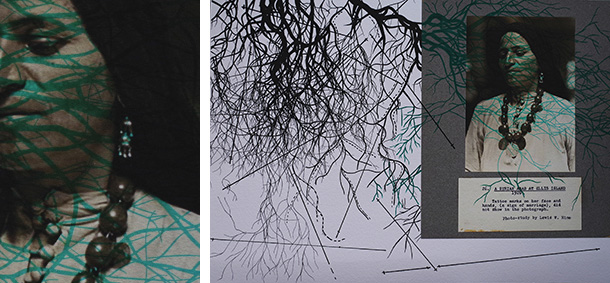
2016-2017, crayon, acrylique et encre de Chine sur papier, 35cm x 50cm
Exhibition view from Drawing Now, Analix Forever, 2017, Paris.
Courtesy of the artist and Analix Forever, Geneva.
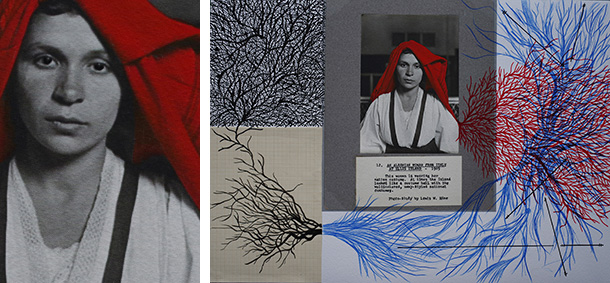
2016-2017, crayon, acrylique et encre de Chine sur papier, 35cm x 50cm
Exhibition view from Drawing Now, Analix Forever, 2017, Paris.
Courtesy of the artist and Analix Forever, Geneva.
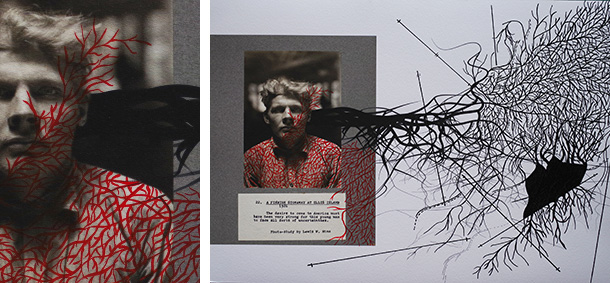
2016-2017, crayon, acrylique et encre de Chine sur papier, 35cm x 50cm
Exhibition view from Drawing Now, Analix Forever, 2017, Paris.
Courtesy of the artist and Analix Forever, Geneva.
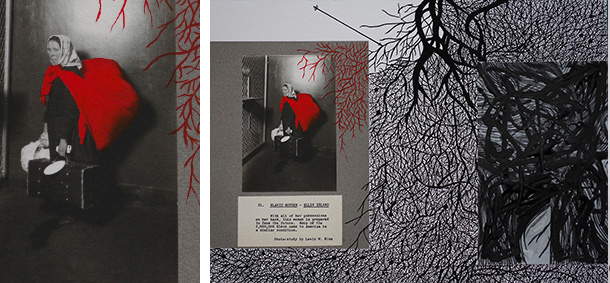
2016-2017, crayon, acrylique et encre de Chine sur papier, 35cm x 50cm
Exhibition view from Drawing Now, Analix Forever, 2017, Paris.
Courtesy of the artist and Analix Forever, Geneva.
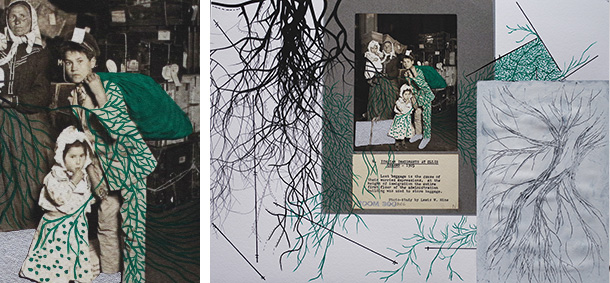
2016-2017, crayon, acrylique et encre de Chine sur papier, 35cm x 50cm
Exhibition view from Drawing Now, Analix Forever, 2017, Paris.
Courtesy of the artist and Analix Forever, Geneva.
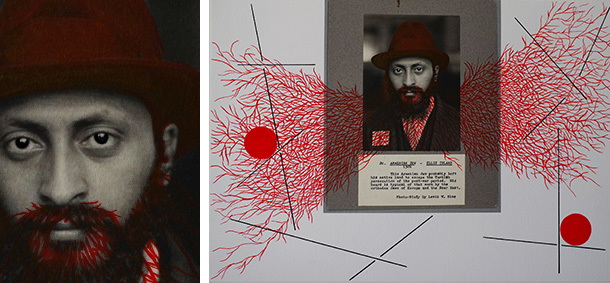
2016-2017, crayon, acrylique et encre de Chine sur papier, 35cm x 50cm
Exhibition view from Drawing Now, Analix Forever, 2017, Paris.
Courtesy of the artist and Analix Forever, Geneva.
'' From these portraits, mounir fatmi traced roots for these people. These roots that are torn away and then return, more complex than before;
vegetal, dendritic roots, sometimes bloody and piercing. Roots that go from one drawing to the next, that embrace and entangle each other, like Baucis and Philemon.
Roots for exchanging and sharing, roots for inclusion, and roots that grow as we walk. ''
Barbara Polla, March 2017
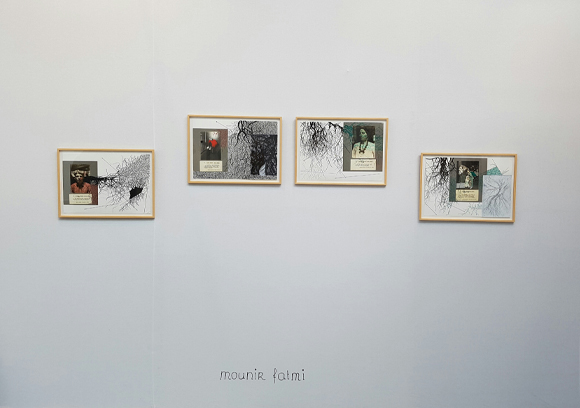
The island of the roots
Exhibition view from Drawing Now, Analix Forever, 2017, Paris.
Courtesy of the artist.
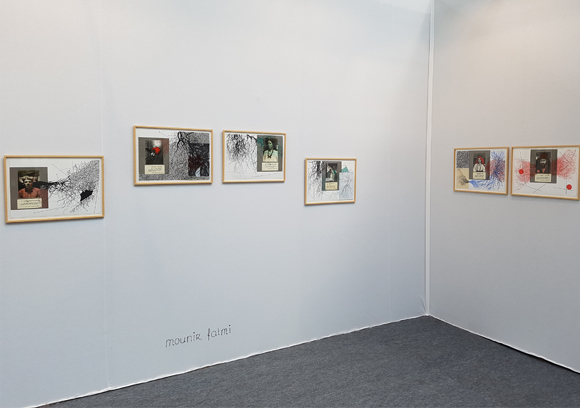
The island of the roots
Exhibition view from Drawing Now, Analix Forever, 2017, Paris.
Courtesy of the artist.
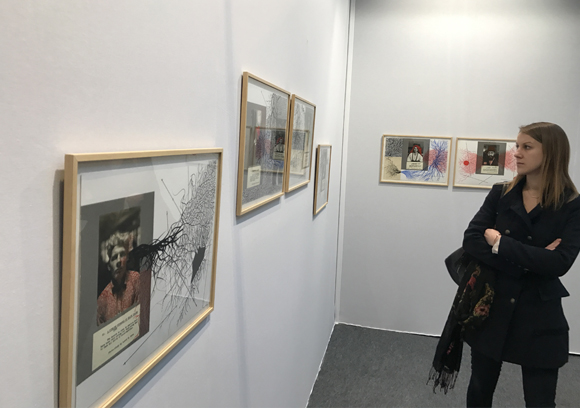
The island of the roots
Exhibition view from Drawing Now, Analix Forever, 2017, Paris.
Courtesy of the artist.
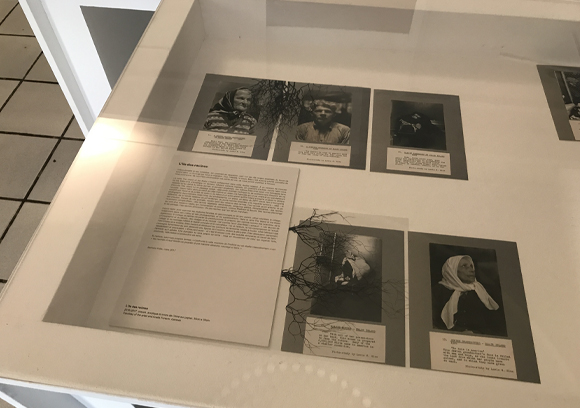
The island of the roots
Exhibition view from Le Pavillon de l’exil, Galerie Delacroix, 2017, Tangier.
Courtesy of the artist.
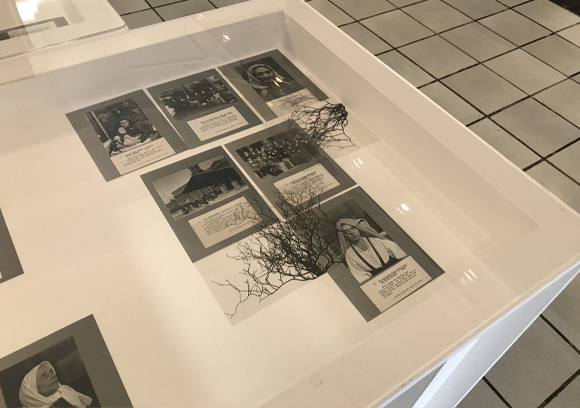
The island of the roots
Exhibition view from Le Pavillon de l’exil, Galerie Delacroix, 2017, Tangier.
Courtesy of the artist.
|
|
|
|
|
|
L’interculturalité et ses richesses, son potentiel de réparation, sont l’un des fils rouges essentiels du travail de mounir fatmi, un fil rouge qui inclut la migration, l’exil, l’identité, le corps. Mais c’est aussi la volonté constante de nous surprendre, de nous faire reconsidérer nos points de vue, de nous donner à penser à l’envers.
La série The Island of the Roots s’inscrit parfaitement dans cette double logique. À un moment de l’histoire où les États-Unis d’Amérique se ferment, refusent certains migrants, en chassent d’autres, mounir fatmi nous rappelle qu’au début du siècle dernier, et pendant longtemps, ces mêmes États-Unis furent une formidable terre d’accueil. Ellis Island fut ce passage obligé, cette porte d’entrée mythique où se scellaient tant d’espoirs de vie nouvelle. mounir fatmi alors se saisit de cette histoire et, selon une habitude qui lui est chère et qui constamment enrichit son travail et la portée de celui-ci, se réfère à un autre artiste qu’Ellis Island a inspiré, à savoir le célèbre photographe documentaire Lewis Hine, qui photographia, sur place, au début du 20ème siècle, tant d’immigrants différents, de la famille italienne au juif arménien, du jeune homme finlandais à la migrante syrienne – déjà – et tant d’autres. Partant de ces portraits, mounir fatmi leur dessine des racines. Ces racines qu’on arrache, et qui reviennent, complexifiées ; des racines végétales, dendritiques, sanguines parfois, transperçantes ; des racines qui vont d’un dessin à l’autre, qui s’embrassent et s’enlacent, comme Philémon et Baucis. Des racines d’échange et de partage. Des racines d’inclusion. De ces racines que l’on fait en marchant.
mounir fatmi, pour exprimer les multiples facettes de ses concepts et de ses visions, utilise volontiers le collage, notamment dans ses vidéos et ses photographies, et les superpositions. Dans la série The Island of the Roots également, le collage lui permet de parler du passé comme du présent, des racines comme des branches, de la photographie et du dessin, des visages et du monde. Car comme l’écrit Jean-Marc Lachaud : « Les œuvres de collage et de montage mêlent la réalité concrète et le merveilleux, l’ici et l’ailleurs, le non-contemporain et l’actuel, l’identifiable et le bizarre. Elles tracent et détracent les contours de territoires inédits à fouiller. Elles bâtissent des passages éphémères au sein desquels des figures de l’inconnu restent à décrypter. Elles dépaysent, perturbent, déstabilisent et provoquent. » Émeuvent aussi – et c’est là encore l’une des beautés rémanente du travail de fatmi : l’émotion qu’il génère. Une (é)motion au sens propre du terme : mise en mouvement de celui qui regarde, forte, profonde, inéluctable et productive de sens.
Et l’artiste, selon ses propres termes, « Confronté à cette machine de l’histoire qui se répète inlassablement » voit « les racines et leur liberté de pousser d’une manière aléatoire, sauvage et libre. »
Barbara Polla, mars 2017.
|
|
Interculturality and its treasures along with the potential it holds for reparation are some of the fundamental themes of Mounir fatmi’s work, themes that include migration, exile, identity and the body. But this also conveys the constant desire to surprise us, make us reconsider our points of view and think in reverse.
The series The Island of the Roots fits perfectly this double logic. At a point in their history where the United States are closing up, refusing certain immigrants, kicking out others, mounir fatmi reminds us that at the beginning of the previous century, and for a long time, these same United States were a formidable land of refuge. Ellis Island was like a mythical port of entry where so many hopes of a new life crystallized. mounir fatmi decided to seize this history and, following an enduring habit of his that constantly enriches his work as well as its impact, refers to another artist who was also inspired by Ellis Island, the famous documentary photographer Lewis Hine, who was there in the early 20th century, taking pictures of so many different immigrants, from Italian families to Armenian Jews, from a young Finnish man to a Syrian migrant – back then already – and so many others. From these portraits, mounir fatmi traced roots for these people. These roots that are torn away and then return, more complex than before; vegetal, dendritic roots, sometimes bloody and piercing. Roots that go from one drawing to the next, that embrace and entangle each other, like Baucis and Philemon. Roots for exchanging and sharing, roots for inclusion, and roots that grow as we walk.
mounir fatmi, in order to express the multiple facets of his concepts and visions, often uses collage, particularly in his videos and photographs, as well as superimpositions. Likewise, in the series The Island of the Roots, the technique of collage allows him to address the past and the present, roots and branches, photography and drawing, faces and the world. As the art theoretician Jean-Marc Lachaud wrote: “Works of collage and montage combine concrete reality with magic, the here and the elsewhere, the non-contemporary and the current, the identifiable and the bizarre. They trace and untrace the contours of unexplored territories to rummage through. They build ephemeral passages in which unknown figures remain to be deciphered. They disorient, trouble, destabilize and provoke.” They are also moving – and that’s yet another of the beauties of fatmi’s work: the emotions it generates. An (e)motion in the primal sense: the setting in motion of the viewer in a way that is strong, profound, ineluctable and meaningful.
As for the artist, he is in his own words “confronted with this machine of history that tirelessly repeats itself”, and sees “the roots and their freedom to grow randomly, wildly and freely.”
Barbara Polla, March 2017.
|
|
|
|